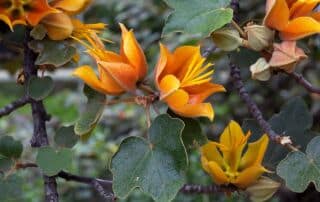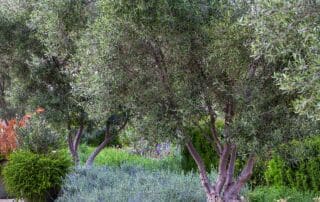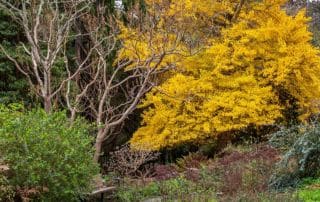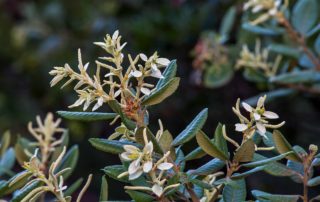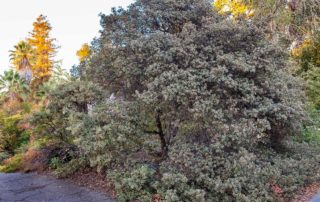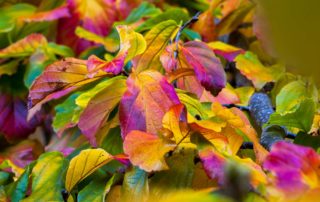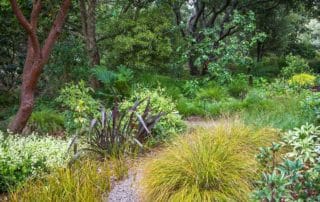Description and photos of trees for summer-dry gardens
x Chiranthomontodendron lenzii: What’s in a Name?
It’s a mouthful. x Chiranthomontodendron lenzii, the hybrid monkey hand tree, is the result of an intergeneric cross between the Mexican monkey hand tree, Chiranthodendron pentadactylon, native to Guatemala and adjacent parts of Mexico, and the flannelbush cultivar Fremontodendron ‘Pacific Sunset’. The latter is itself a cross between F. californicum, native primarily to California, and F. mexicanum, native to northern Baja California and adjacent parts of San Diego County. Distinctive flowers and leaves of x Chiranthomontodendron lenzii, hybrid monkey hand tree As are its parents, the hybrid monkey hand tree is best known for its distinctive flowers,


